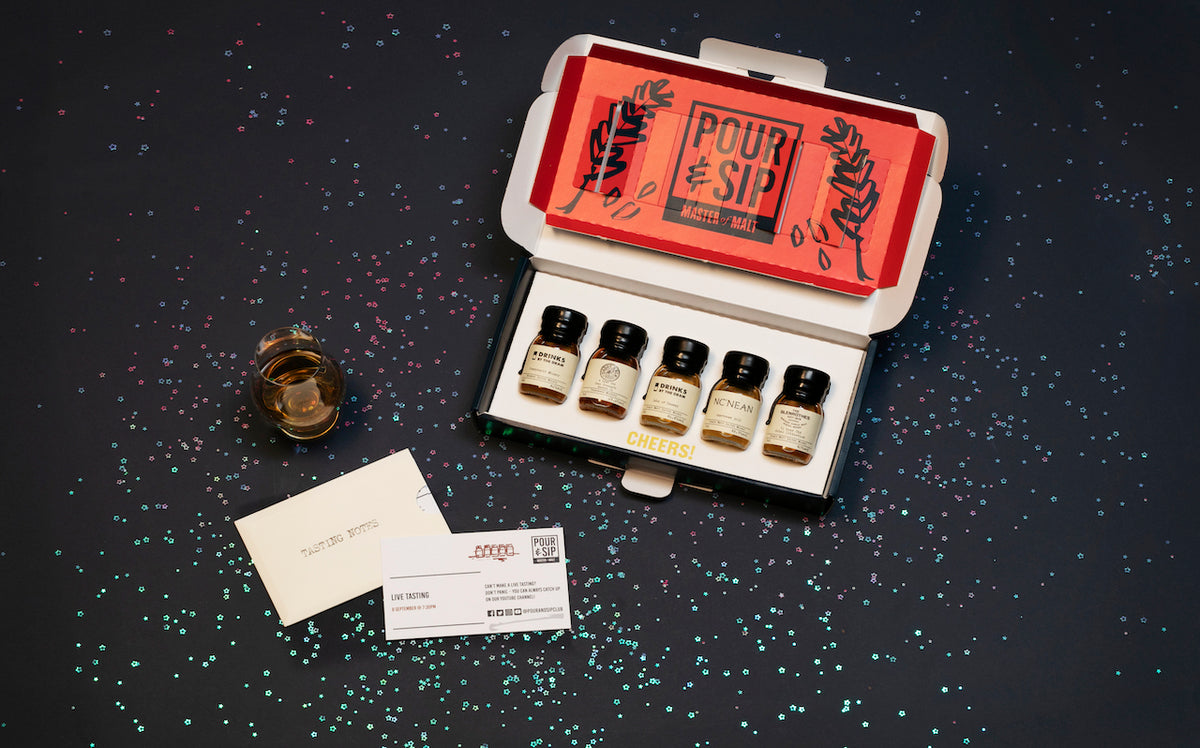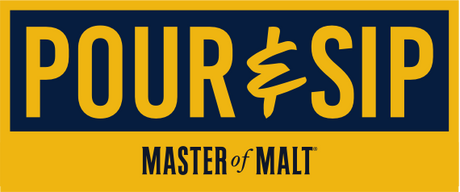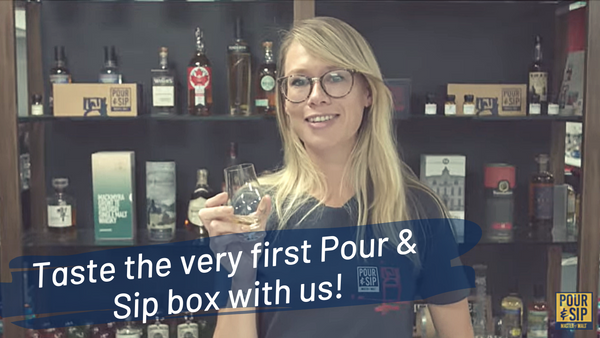It's Pour & Sip's second birthday!

The end of summer may be looming, but we’re not going to think about that. Instead, we’re going to be celebrating, because it’s our second birthday this month! We’re toasting the only way we know how, and that’s with whiskies – five of them, as always, and this month they’re from all over Scotland, with a special appearance from Tennessee, too.
Daddy Rack 4 Year Old Cask Strength (barrel 06)
A single cask Tennessee whiskey here from Daddy Rack, which was founded by drinks industry veteran J. Arthur Rackham, named after a nickname that his eldest daughter gave him. Drawn from the single cask (barrel number 6) was a four-year-old whiskey, produced from a mash bill of corn (80%), rye (10%), and malted barley (10%). It was also bottled at cask strength, meaning it weighs in at a generous 61.6% ABV(!), and yielded just 228 bottles. Precious stuff! But the whiskey had to go through an extra step, as all Tennessee whiskey legally has to: the Lincoln County Process, whereby the spirit must be filtered through maple charcoal before it’s filled into lightly-charred American white oak barrels. Daddy Rack goes one step further, maple charcoal-filtering the whiskey after it’s been in the cask, too!
Coachbuilt Whisky
It’s not uncommon for whisky and car enthusiasts to overlap (though, for obvious reasons, keep the two hobbies distinctly separate), and that’s how Coachbuilt Whisky was created – by spirits expert George Koutsakis and Formula One racing driver Jenson Button! The two founders met serendipitously, and bonded over Button’s love of coachbuilding, and the similarities between that and the art of whisky blending. And so, Coachbuilt was born. It was also created with the aim to put the spotlight back on blended Scotch, and all of its merits. The blend itself is made with spirits from each of Scotland’s five whisky-producing regions: Speyside, Campbeltown, the Highlands, the Lowlands, and the Islands. Each component is then married together in ex-sherry casks, so there’s lots of chocolate and spice to be found here.
Nc'nean Huntress 2022
This is the first release from a spring seasonal release from the relatively new Nc’Nean (pronounced ‘nook-knee-anne’) distillery, which was founded in March 2017 and became the first fully organic modern distillery in Scotland powered by 100% renewable energy! The series is set to explore all things flavour, and in this case that means experimenting with yeast. Huntress is made with a combination of three yeasts, one of which (called Distila Max RM, if you like to geek out) is usually used for rum instead of whisky, meaning there’s loads of tropical fruit flavours in here. The single malt is matured in 61% STR (shaved, toasted, and re-charred) ex-red wine and 39% ex-bourbon casks, which then adds lots of rich caramel and toasty oak to the otherwise fruity mix.
The Glenrothes 12 Year Old - Soleo Collection
A wonderfully sherry cask-focused single malt from Glenrothes in Speyside, released for the distillery’s Soleo Collection, which takes its name from the process of sun-drying grapes in Jerez for sherry production. The range was released in 2018, and was a big move for Glenrothes because it marked its move from vintages (which it has been sporting on its bottles since 1993) to age statements. The distillery itself was built in 1878, and has an intriguing production process. Both mashing and fermentation are fairly speedy, however distillation is very long, and takes place in very tall stills, meaning there’s more reflux (when spirit falls back down the still neck and is then re-distilled), making for a complex, light spirit that harmonises wonderfully with sherry casks.
Isle of Raasay Single Malt
Found on the island of the same name, Isle of Raasay is the first legal distillery to operate on its coastal home! The Inner Hebridean islet lies off the east coast of Skye, and the island’s permanent population stands at just 170. The distillery filled its first casks in October 2017, with the first single malt released in 2020. It prides itself on using 100% Scottish barley, while the team is growing Raasay barley for the future. This is its first core release, and takes inspiration from older styles of Hebridean single malts, so is lightly smoky thanks to a blend of both peated (using floral Highland peat) and unpeated Raasay spirits. The two spirit types are matured separately, both in a combination of rye whiskey, chinkapin oak, and Bordeaux red wine casks, before being married together.



